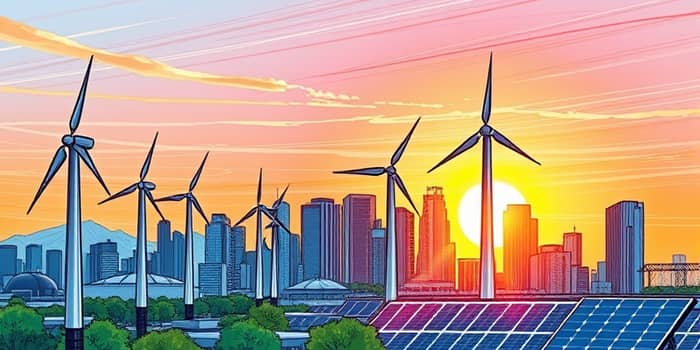
As the global energy landscape evolves, green energy stocks are thriving in 2025 despite shifting policy winds. This remarkable resilience reflects robust fundamentals, technological progress, and enduring investor confidence in a sustainable future.
Renewable energy equities have enjoyed an impressive rally so far this year. Driven by a combination of high-profile innovations, strong demand for decarbonization, and lasting incentives from prior legislation, clean energy shares are outpacing many traditional commodity markets.
On a year-to-date basis, the top-performing renewable stocks include:
NextEra Energy reported a 5% year-over-year revenue increase in Q2 2024, reaching $7.1 billion thanks to enhanced renewables output and strategic acquisitions. Meanwhile, domestic battery manufacturing capacity now exceeds current deployment, establishing a solid foundation for growth in electric vehicles and grid-scale storage.
Beyond the headline performers, a broad array of global clean energy leaders continue to capture capital and expand operations. Investors eye these names for diversified exposure to solar, wind, hydro, and storage technologies.
Utilities and pure-play clean generation firms alike have seen strong capital inflows. Many diversified energy companies are pivoting rapidly toward renewables, yielding compelling long-term value for investors even amid broader sector volatility.
The policy environment in the United States has experienced dramatic shifts between 2022 and 2025. While the Inflation Reduction Act initially unlocked massive tax incentives and funding, the emergence of “Project 2025” has sought to roll back many climate provisions.
Despite these headwinds, robust capital flows established under previous pro-renewable frameworks continue to support project pipelines and investor optimism. Long-term contracts, existing grants, and state-level mandates have maintained a stable backdrop for sector growth.
The U.S. clean energy manufacturing sector is at the forefront of this surge. Solar module output now satisfies roughly 55% of projected annual capacity needs under aggressive decarbonization scenarios. Battery production has ramped so rapidly that current capacity outpaces near-term deployment.
Wind energy manufacturing still lags, though recent announcements hint at renewed investment. Zero-emission vehicle capacity is expected to reach 6.84 million units by 2035, covering up to two-thirds of anticipated EV sales. These supply chain dynamics underpin global demand continues to accelerate renewable adoption across key markets.
Renewable growth is not confined to North America. Asian and European powerhouses—Sungrow, Vestas, EDPR—are setting industry benchmarks. Emerging markets in Latin America, Africa, and Southeast Asia are deploying solar and wind at record pace, often with supportive local policies.
Clean hydrogen is gaining traction as a strategic complement to renewables. Governments and corporations are investing in electrolysis projects and distribution networks, aiming to scale costs down and unlock new industrial applications in shipping, steel, and heavy transport.
For those seeking exposure to this dynamic sector, a disciplined approach can balance risk and reward. Consider these practical guidelines as you craft or adjust your portfolio:
By staying informed and embracing a long-term horizon, investors can capitalize on sustainable momentum that transcends short-term volatility and contribute to a low-carbon future.
The synergy of past policy support, technological progress, and global demand trends has propelled green energy stocks to new highs in 2025. While regulatory uncertainties persist, the underlying market fundamentals remain robust.
As clean energy solutions become increasingly cost-competitive, and supply chains expand, renewable equities are poised to reward patient investors. The ongoing transition to a decarbonized economy offers both financial opportunity and a pathway to a more sustainable planet.
References













